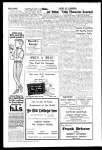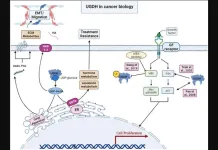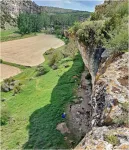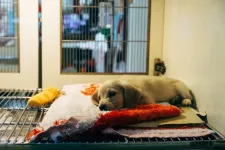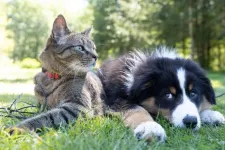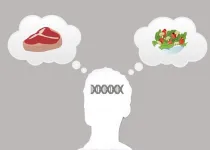(Press-News.org) Winter is coming—eventually. And while the earth is warming, a new study suggests that the atmosphere is being pushed around in ways that cause long bouts of extreme winter cold or wet in some regions.
The study’s authors say they have identified giant meanders in the global jet stream that bring polar air southward, locking in frigid or wet conditions concurrently over much of North America and Europe, often for weeks at a time. Such weather waves, they say, have doubled in frequency since the 1960s. In just the last few years, they have killed hundreds of people and paralyzed energy and transport systems.
The new paper appears this week in the Bulletin of the American Meteorological Society.
“Even though winters are getting milder on average, it’s happening at the expense of increasingly devastating heat extremes in the warm season,” said author Kai Kornhuber, an adjunct scientist at Columbia University’s Lamont-Doherty Earth Observatory. “A hundred years from now, we will probably not have to worry as much about extreme cold, because everything is getting warmer. But today and going forward, cold is still a very relevant hazard.”
The jet stream is a fast-moving river of air that continuously circles the Northern Hemisphere from east to west. It generally flows within relatively straight boundaries, segregating cold polar air masses from the midlatitudes, but at times it can naturally develop big wobbles. Some scientists think these wobbles are increasing in size and frequency due to rapid warming in the Arctic that is far out proportion to more southerly regions; this destabilizes the system, generating winds that break down the north-south barrier, they say. Given the right conditions, certain of these wobbles can become amplified into symmetrical waves that then lock in place across the globe, somewhat similar to the vibrations that produce a constant musical pitch. These are called Rossby waves.
In a 2019 study Kornhuber and colleagues showed that a repeating Rossby wave pattern known as a wave-7—that is, seven giant peaks and seven matching troughs spanning the globe—draws warm, dry air from the subtropics up to the midlatitudes, causing concurrent summer heat waves and droughts in predictable parts of North America, Europe and Asia. These can cause widespread, simultaneous crop losses in important breadbasket regions, the study said.
The newer paper shows more or less the other side of the coin. A winter pattern known as a wave-4—globally, four peaks and four matching troughs —tend to lock in place. The authors say that when this happens, the chances of extreme cold or wet in the trough triples. At the same time, abnormally warm or dry conditions may develop in the peaks.
The most recent major wave-4 iteration brought a February 2021 cold wave to much of Canada, the United States and even northern Mexico. Temperatures fell as much as 50 degrees F below average as far south as the U.S. Gulf Coast. Parts of the Deep South saw rare snowfall. Hardest hit: Texas, where record cold paralyzed natural gas pipelines and other energy infrastructure, knocking out much of the electricity grid and causing homes and businesses to go dark and freeze. All told, at least 278 people were killed directly or indirectly by the cold wave, and there was nearly $200 billion in damage. A similar though less destructive event caused a January-February 2019 cold snap in the eastern United States, killing more than 20 people.
The same pattern often hits on the other side of the Atlantic at the same time, usually most most extreme in southwestern Europe and Scandinavia. The January-February 2019 event brought extreme low temperatures to both southern France and Sweden. At the same time, by sweeping in moist air from the Atlantic, it caused extreme precipitation and flooding across many areas in central and eastern Europe. Similar events took place in Europe in 2013 and 2018.
The researchers say that 50 years ago, such concurrent waves took hold on average only once each winter. The numbers vary year to year, but now the average has risen to twice a year.
“This adds to the growing evidence that extreme weather over North America and Europe are often synchronized,” said the study’s other author, Gabriele Messori of Sweden’s Uppsala University. Messori published a paper earlier this year noting repeated example of this phenomenon, and hypothesizing a connection to large-scale atmospheric circulation patterns.
Kornhuber said the exact mechanisms that cause the emergence of the wave-4 pattern require further research, but he suspects it starts with periodic changes in oceanic conditions over parts of the Pacific that, under the right circumstances, can trigger a global chain reaction. Pinning down that mechanism might allow scientists to better predict the cold or wet waves, he said.
Kornuber said that there is growing evidence of a connection between warming climate and the summer meanders that bring heat waves; however the winter waves are still a matter of intense scientific discourse. Scientists are currently investigating several possible mechanisms that could point to a climate connection, and how things might evolve in future.
Kornhuber noted that a study he coauthored earlier this year showed that climate models still struggle to reproduce the most extreme regional weather anomalies associated with these larger-scale patterns even in summer; this could lead to underestimations of potential weather-related crop losses in particular areas. He said upcoming work will focus on investigating whether the worst extreme are linked to human causes or just natural variability.
# # #
Scientist contact: kaik@ldeo.columbia.edu
More information: Kevin Krajick, Senior editor, science news, Columbia Climate School/Lamont-Doherty Earth Observatory kkrajick@ei.columbia.edu 917-361-7766
END
A Weill Cornell Medicine researcher has received a $610,000 grant from the Department of Defense to investigate the mechanisms causing DNA instability that potentially drives metastasis in bladder cancer. The research also aims to identify methods to intercept this spread. The Peer-Reviewed Cancer Research Program (PRCRP) Idea Award funds innovative, high-risk, high-reward basic cancer research. One of the goals of the PRCRP program is to decrease the burden of cancer on service members and their families, veterans, and the American public.
“Approximately 40% of patients with muscle-invasive bladder cancer develop metastases, where ...
Contacts:
David Hosansky, UCAR/NCAR Manager of Media Relations
hosansky@ucar.edu
720-470-2073
Audrey Merket, UCAR/NCAR Science Writer and Public Information Officer
amerket@ucar.edu
303-497-8293
Simultaneous outbreaks of large wildfires will become more frequent in the Western United States this century as the climate warms, putting major strains on efforts to fight fires, new research shows.
The new study, led by scientists at the National Center for Atmospheric Research (NCAR), focused on wildfires of 1,000 acres or larger. It found that wildfire seasons in which ...
Whether you’re battling foes in a virtual arena or collaborating with colleagues across the globe, lag-induced disruptions can be a major hindrance to seamless communication and immersive experiences.
That’s why researchers with the University of Central Florida’s College of Optics and Photonics (CREOL) and the University of California, Los Angeles, have developed new technology to make data transfer over optical fiber communication faster and more efficient.
Their new development, a novel class of optical modulators, is detailed in a new study published recently in the journal Nature Communications. Modulators can be thought of as like a light switch that controls certain ...
Rice University alumnus Louis Brus (’65) has been awarded the Nobel Prize in Chemistry for the “discovery and development of quantum dots,” nanosized particles with unique properties “that now spread their light from television screens and LED lamps,” according to a Royal Swedish Academy of Sciences announcement today.
Brus, who started his undergraduate education at Rice in 1961, shares the distinction with Moungi Bawendi and Alexei Ekimov. Their work has been crucial to the development of nanotechnology, which has helped drive major computing ...
“Given the potential challenges of directly inhibiting UGDH, therapeutic strategies may extend to targeting downstream pathways and upstream substrates.”
A new review paper was published in Oncotarget's Volume 14 on September 28, 2023, entitled, “UDP-glucose dehydrogenase (UGDH) in clinical oncology and cancer biology.”
UDP-glucose-6-dehydrogenase (UGDH) is a cytosolic, hexameric enzyme that converts UDP-glucose to UDP-glucuronic acid (UDP-GlcUA), a key reaction in hormone and xenobiotic metabolism and in the production of extracellular matrix precursors.
In this review, researchers Meghan J. Price, Annee D. Nguyen, Jovita K. Byemerwa, ...
Paleolithic human populations survived even in the coldest and driest upland parts of Spain, according to a study published October 4, 2023 in the open-access journal PLOS ONE by Manuel Alcaraz-Castaño of the University of Alcalá, Spain, Javier Aragoncillo-del Rió of the Molina-Alto Tajo UNESCO Global Geopark, Spain and colleagues.
Research into ancient hunter-gatherer populations of the Iberian Peninsula has mainly focused on coastal regions, with relatively little investigation into the inland. A classic hypothesis has been that the cold and dry conditions of inland Iberia ...
Antimicrobials don't appear to help pet dogs with uncomplicated diarrhea - so should likely be prescribed less often by vets - according to new causal inference study
###
Article URL: https://journals.plos.org/plosone/article?id=10.1371/journal.pone.0291057
Article Title: Target trial emulation: Do antimicrobials or gastrointestinal nutraceuticals prescribed at first presentation for acute diarrhoea cause a better clinical outcome in dogs under primary veterinary care in the UK?
Author Countries: UK
Funding: CP is supported at the RVC ...
A new analysis estimates a variety of potential benefits for environmental sustainability—for instance, reduced freshwater consumption and greenhouse gas emissions—that could result from switching all pet dogs and cats in the US or around the world to nutritionally sound, vegan diets. Andrew Knight of Griffith University, Australia, presents these calculations in the open-access journal PLOS ONE on October 4, 2023.
The livestock industry has environmental impacts, such as land and freshwater ...
First fully peer-reviewed, indexed study to look at link between strict vegetarianism and genetics
More people would like to be vegetarian than actually are. ‘We think it’s because there is something hard-wired here that people may be missing’
Findings open the door to further studies that could have important implications regarding dietary recommendations and the production of meat substitutes
CHICAGO --- From Impossible Burger to “Meatless Mondays,” going meat-free is certainly in vogue. But a person’s genetic makeup plays ...
What if a vaccine, given to patients just before or after arriving at the hospital, could protect them against lethal superbugs that lurk in healthcare settings?
That’s the premise behind an experimental vaccine invented by a USC-led team and patented by the university. Researchers designed the formula to prevent serious infections from drug-resistant pathogens. A new study shows that a single dose, administered in mouse models, put immune cells into "Incredible Hulk" mode, providing rapid protection against eight different bacteria and fungi species.
“It’s an early warning system. ...

